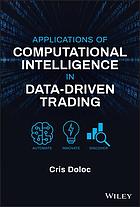Two decades of participation in the digital transformation of the trading industry as a system architect, quant, and trader, coupled with the experience of teaching in the Financial-Mathematics program at the University of Chicago, provided me with a unique perspective that I will convey to the reader throughout this book. As both a practitioner and an educator, I wrote this book to assert the fact that the trading indus- try was, and continues to be, a very fertile ground for the adoption of cutting-edge technologies. The central message of this book is that the development of problem-solving skills is much more important for the career advancement of a quantitative practitioner than the accretion and mastering of an ever-increasing set of new tools that are flooding both the technical literature and the higher education curricula. While the majority of these tools become obsolete soon after their release into the public domain, acquir- ing an adequate level of problem-solving expertise will endow the learner with a long-lasting know-how that will transcend ephemeral paradigms and cultural trends. If the use of an exhaustive tool set is providing the solution architect with hori- zontal scalability, mastering the expertise of what tools should be used for any given problem will grant the user with the vertical scalability that is absolutely necessary for implementing intelligent solutions. While the majority of books about the appli- cation of machine intelligence to practical problem domains are focused on how to use tools and techniques, this book is built around six different types of problems that are relevant for the quantitative trading practitioner. The tools and techniques used to solve these problem types are described here in the context of the case studies presented, and not the other way around.
چکیده فارسی
دو دهه مشارکت در تحول دیجیتال صنعت تجارت به عنوان یک معمار سیستم، کمیت و معامله گر، همراه با تجربه تدریس در برنامه مالی-ریاضیات در دانشگاه شیکاگو، دیدگاه منحصر به فردی را برای من فراهم کرد. من در طول این کتاب به خواننده منتقل خواهم کرد. من هم به عنوان یک پزشک و هم به عنوان یک مربی، این کتاب را نوشتم تا ثابت کنم که صنعت بازرگانی زمینه بسیار مناسبی برای پذیرش فناوریهای پیشرفته بوده و همچنان ادامه دارد. پیام اصلی این کتاب این است که توسعه مهارتهای حل مسئله برای پیشرفت شغلی یک پزشک کمی مهمتر از جمعآوری و تسلط بر مجموعهای روزافزون از ابزارهای جدید است که هم ادبیات فنی و هم ادبیات را سیل میکنند. برنامه های درسی آموزش عالی در حالی که اکثر این ابزارها به زودی پس از انتشار در حوزه عمومی منسوخ می شوند، کسب سطح کافی از تخصص حل مسئله به یادگیرنده دانش طولانی مدتی می بخشد که از پارادایم های زودگذر و روندهای فرهنگی فراتر می رود. اگر استفاده از یک مجموعه ابزار جامع مقیاس پذیری افقی را برای معمار راه حل فراهم کند، تسلط بر تخصص در مورد ابزارهایی که باید برای هر مشکلی استفاده شود، مقیاس پذیری عمودی را به کاربر می دهد که برای اجرای راه حل های هوشمند کاملاً ضروری است. در حالی که اکثر کتابهای مربوط به کاربرد هوش ماشینی در حوزههای مشکل عملی بر نحوه استفاده از ابزارها و تکنیکها متمرکز شدهاند، این کتاب حول شش نوع مشکل مختلف ساخته شده است که برای متخصصان تجارت کمی مرتبط هستند. ابزارها و تکنیک های مورد استفاده برای حل این نوع مشکلات در اینجا در چارچوب مطالعات موردی ارائه شده توضیح داده شده است و نه برعکس.
ادامه ...
بستن ...
Author(s): Doloc, Cris
Publisher: Wiley, Year: 2020
ISBN: 9781119550518,1119550513,9781119550525,1119550521
ادامه ...
بستن ...










